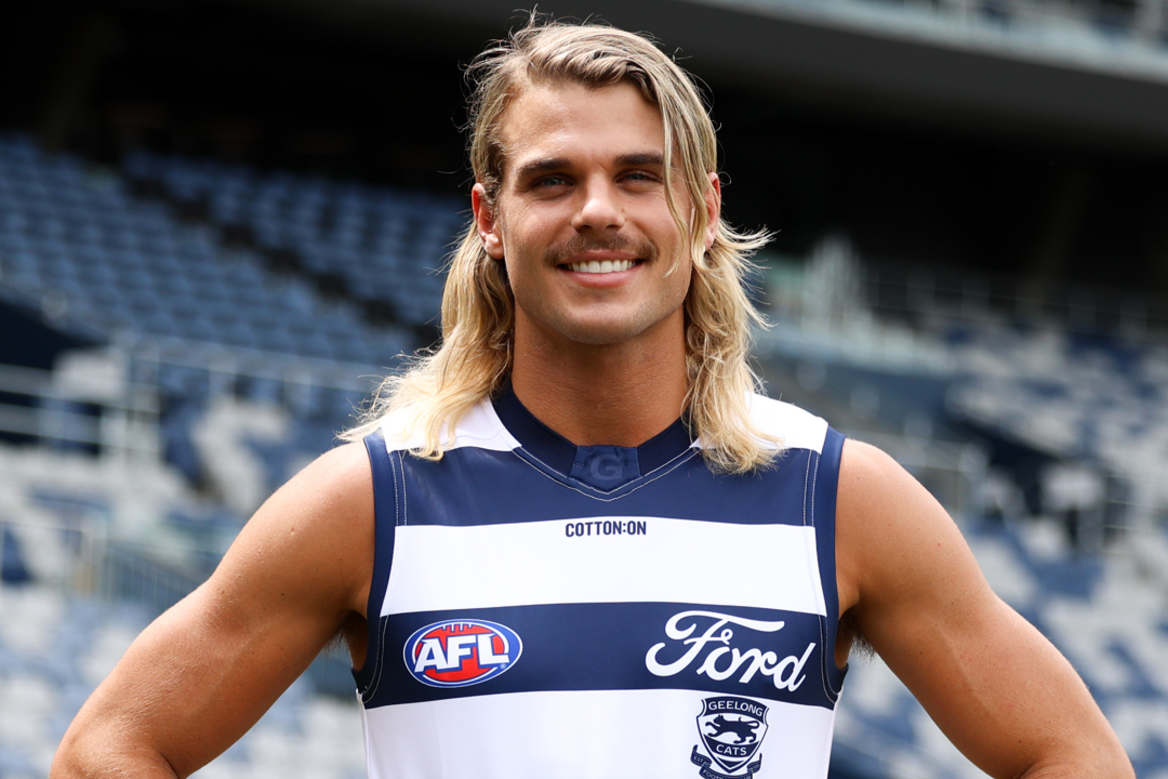Bailey Smith, despite his marketability and public profile, had a challenging final season with the Bulldogs. He had played 103 games for the club but was sidelined for all of 2024 due to a knee injury. His trade to Geelong occurred in the final moments of the AFL trade period, with the Bulldogs receiving draft pick No. 17 in a complex, multi-club trade.
Smith’s time with the Bulldogs was marked by a unique combination of high visibility and occasional detachment. He was a star player whose image, particularly his long mullet and wispy moustache, made him a household name—even among people who had little interest in football. This boosted the Bulldogs’ profile, especially with young women who followed Smith for his looks and social media presence rather than his on-field performance. However, his large following did not translate into a loyal Bulldogs fanbase, as the focus remained on Smith as an individual. Despite his popularity, Smith never truly enjoyed the media commitments that came with being the face of the club.
Smith’s reasons for leaving the Bulldogs, according to those close to him, were simple: he wanted to play as a central midfielder, but the club’s lineup in that area—featuring Marcus Bontempelli, Tom Liberatore, Adam Treloar, and Jackson Macrae—meant he was often relegated to playing high half-forward or on the wing. This limited his ability to play in his preferred position, and after his knee injury in 2024, the Bulldogs’ midfield underwent changes. Ed Richards solidified his place in the midfield, while Jackson Macrae moved to the Saints. Despite the changes, Smith felt there wouldn’t be enough opportunity for him to take on a midfield role moving forward.
While Smith was well-liked by his teammates and coaches, his time away from the team during his injury seemed to exacerbate a sense of isolation. The Bulldogs had a policy allowing injured players some flexibility in their rehab schedule, and since Smith was one of the few long-term injured players, he often trained alone. This may have contributed to the perception that he was distancing himself from the group.
There was speculation about Luke Beveridge, the Bulldogs’ coach, having “favorites,” but those close to Smith indicated that his relationship with Beveridge remained positive. The real issue for Smith was timing. He missed his chance to establish himself in the Bulldogs’ midfield, and when the team began to inject more speed and pace, he was sidelined by injury.
Smith’s move to Geelong comes at an ideal time for the Cats, who are in the process of revitalizing their own midfield following the retirement of Joel Selwood. Geelong is gradually phasing out older players like Patrick Dangerfield and Cam Guthrie and looking for younger talent to fill the gaps. Smith, who thrives on playing in the center, fits into this plan perfectly. Not only is Geelong eager to place him in a midfield role, but his pre-existing relationship with their key sponsor, Cotton On, made Geelong an attractive destination. Smith has been an ambassador for the clothing brand, and this connection likely influenced his decision to move to the Surf Coast. Additionally, he had already purchased a house in the area, which suggested he was seeking a fresh start away from the pressures of Melbourne and its intense spotlight on his personal life.
In Smith’s own words, it was not just about the football. The culture and people at Geelong were a major draw for him, providing him with a fresh start both on and off the field.
